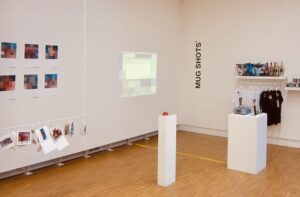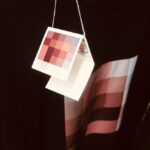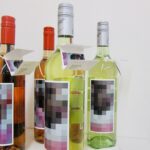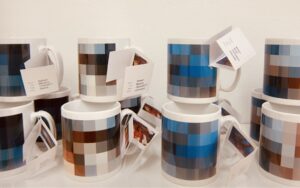My love for photography started when my son Raoul began studying documentary photography at the Royal Academy of Art in The Hague in 2007. I became deeply impressed by what was involved in this study and how it required deep introspection on the part of the student to be able to portray a subject. Sometimes I found, as an outsider or perhaps precisely because I am Raoul’s mother, that people at the KABK were very critical and demanded a lot from their students.
Photography for me was a field that was completely untapped. Gradually I began to immerse myself in it and learned to distinguish step by step how a photographer approached a subject. I bought books on photography, visited many exhibitions and started taking photography classes myself.
Graduating with Mug Shots
After four years, Raoul graduated from the KABK. It was not at all certain that he would be allowed to graduate. His study supervisors were not really enthusiastic about his chosen subject. Therefore, because of that subject, Raoul was assigned a space at the far end of the building. The construction of his graduation exhibition took about a week and Raoul’s father and I supported him. We were extremely proud of him partly because he had been very driven and persistent in shaping his subject.
 In fact, Raoul had set up a sort of souvenir store with T-shirts, coffee mugs, pillows, posters and wine bottles with cheerfully checkered prints. Attached to each product was a small card, and it was only when one unfolded these accompanying cards that one could see that those colored squares were the greatly enlarged pixels of gruesome photographs that had been circulating on the Internet since the ‘Arab Spring’.
In fact, Raoul had set up a sort of souvenir store with T-shirts, coffee mugs, pillows, posters and wine bottles with cheerfully checkered prints. Attached to each product was a small card, and it was only when one unfolded these accompanying cards that one could see that those colored squares were the greatly enlarged pixels of gruesome photographs that had been circulating on the Internet since the ‘Arab Spring’.
Steenbergen Stipend
When you graduate, it also happens with a graduation exhibition visited by interested parties, journalists, museum directors and the professional jury of the Steenbergen Foundation. This foundation has been awarding a stipend to students of Dutch art academies for young photography talent since 1998. A professional jury selects 5 photographic graduation works. The creator of the best photographic graduation work receives the Steenbergen Stipend, an incentive prize of €5,000, and the nominees also receive an exhibition in the Nederlands Fotomuseum. The public can vote for one of the 5 nominees for the public prize during the exhibition.
In the press
I remember sitting at my desk in the office one morning when a colleague told me that Raoul’s graduation exhibition was mentioned in both De Volkskrant and the NRC. Of the 5 nominees, 2 stood out. Both Raoul and Pieter van de Boogert were thought to be the first- and second-prize winners.
That Raoul eventually became the winner of the Steenbergen Stipend and also of the audience award was mainly because people felt that Raoul dared to take essential subjects (the commercialization of violence and the tension between news and hype) to the extreme in an understandable way.
In the NRC, they described it as follows:
 The classroom in the Royal Academy of Art looks like a souvenir shop. T-shirts, pillows, bottles of wine. On a shelf are mugs. A block pattern of colorful pixels is printed on everything. Against a wall, a pixel film is running. Mug Shots, the photographer calls his graduation project.
The classroom in the Royal Academy of Art looks like a souvenir shop. T-shirts, pillows, bottles of wine. On a shelf are mugs. A block pattern of colorful pixels is printed on everything. Against a wall, a pixel film is running. Mug Shots, the photographer calls his graduation project.
Nice, pixels, but haven’t we passed that stage many years ago? What a fuss over a little idea. Until you discover a red emergency button near the film projection. ‘Beware! The images that can be seen when you push this button may be considered shocking.’ When you press the button, the film stops and a gory scene of a man in a hospital appears. The moving pixels hide a film about the Arab uprising.
‘It’s about self-censorship and fear of disrupting one’s own well-being,’ Raoul says. ‘I call it self-censorship or social censorship because the people who censor for us are part of society. The media are the gatekeepers who filter information based on what they expect their audience will and will not see. But that’s how they keep out essential things. Those are sometimes shocking, and indeed we would rather not see them, but those images are necessary to make judgements about the situation in the world.
 Through his souvenir store, Raoul wants to offer the possibility of confrontation. He has presented his idea in the form of a store so as not to immediately scare off visitors. ‘I have to conceal and seduce with the stylized image and then let them discover what is actually behind it. The disgust is perhaps necessary as an impetus to change the situation.’
Through his souvenir store, Raoul wants to offer the possibility of confrontation. He has presented his idea in the form of a store so as not to immediately scare off visitors. ‘I have to conceal and seduce with the stylized image and then let them discover what is actually behind it. The disgust is perhaps necessary as an impetus to change the situation.’
He compares it to chocolate of which you also don’t know how it was produced and what reality is behind it. Except with Tony’s Chocolonely. ‘I do that with the T-shirts, mugs and pillows by attaching a card with the photo from which the attractive pixel pattern is derived. Then you have to weigh up whether you still want to drink from that beautiful mug. I want to bring the images to people’s attention via a kind of smuggling route.
 Raoul has seen customers in his store hesitate for a long time over which color mug to take before they discovered what was behind it. Others have told him they now suspect a bloody picture behind every pixel pattern.
Raoul has seen customers in his store hesitate for a long time over which color mug to take before they discovered what was behind it. Others have told him they now suspect a bloody picture behind every pixel pattern.
‘Mugshot’ is English for a passport photo of a criminal or suspect, but Raoul writes it loosely because it involves mugs and people who have been shot. ‘It had to have a bit of a catchy name to put it down as a trendy product. It’s more marketing so.’
Raoul was the only photographer to graduate from The Hague without his own photographs. ‘It is also a photographer’s job to reflect on photography and its function in society’.
Proud
That I was proud of Raoul then should be obvious and, despite the fact that he is now working in other fields (very engaged), I still am! Johanna